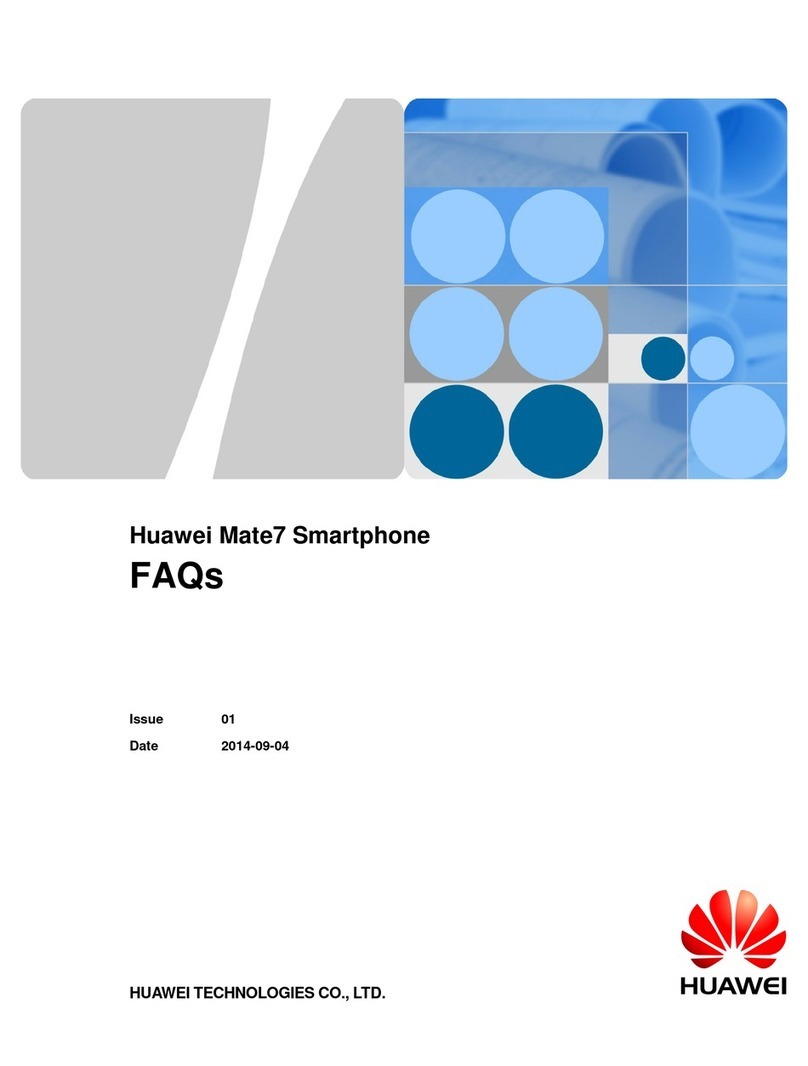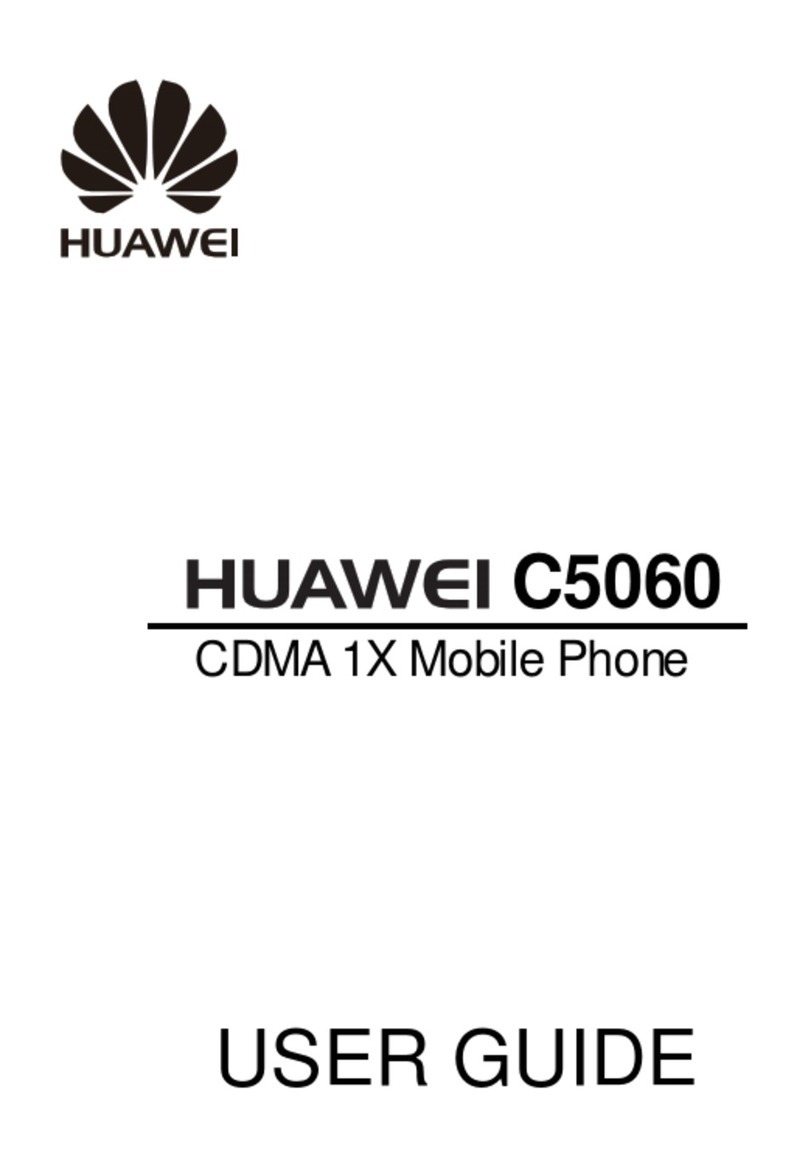Huawei Mate30 Pro 5G User manual

User Guide

Contents
Essentials
Basic Gestures 1
Phone Clone 5
Lock and Unlock Your Screen 5
Get Familiar with the Home Screen 6
Notication and Status Icons 7
Control Panel 9
Screenshots & Screen Recording 14
Adjust Sound Settings 19
Enter Text 20
Multi-Window 22
Show Date and Time When the Screen Is O 25
Power On and O or Restart Your Device 26
Charging 27
Smart Features
AI Voice 30
AI Lens 35
AI Touch 37
Easy Projection 37
Multi-screen Collaboration 39
Multi-screen Collaboration Between Your Tablet and Phone 44
Huawei Share 45
Huawei Print 49
Multi-Device Collaboration 50
Smart Remote 52
Media Controller 52
Camera and Gallery
Launch Camera 54
Take Photos 54
Shoot in Portrait, Night, and Wide Aperture Modes 56
Master AI 58
Zoom to Take Photos 59
Take Panoramic Photos 60
Monochrome Photography 61
AR Lens 61
Take HDR Photos 62
Moving Pictures 62
Add Stickers to Photos 63
Take High-Resolution Photos 63
i

Pro Mode 64
Record Videos 67
Slow-Mo Recording 69
Time-Lapse Photography 70
Dual-View Mode 71
Leica Colors 71
Filters 71
Adjust Camera Settings 71
Manage Gallery 73
Smart Photo Categorisation 80
Highlights 80
Apps
Contacts 83
Phone 86
Messaging 93
MeeTime 95
Calendar 97
Clock 99
Notepad 99
Recorder 103
Email 104
Compass 108
App Twin 108
Optimizer 109
Phone Clone 111
Settings
Search for Items in Settings 113
Wi-Fi 113
Mobile Data 114
More Connections 117
Display & Brightness 121
Sounds & Vibration 123
Notications 125
Biometrics & Password 126
Apps 129
Battery 129
Security 131
Privacy 133
Accessibility Features 136
Users & Accounts 142
System & Updates 143
About Phone 148
Contents
ii

Essentials
Basic Gestures
Basic Gestures and Shortcuts
Get Familiar with Air Gestures
You can navigate on your device using air gestures and without having to touch the screen.
For example, you can use air gestures to take a screenshot, scroll up or down, answer a call,
or pause audio/video playback.
Go to Settings > Accessibility features > Smart Sensing and make sure that Air scroll,
Grabshot, or Air press is enabled.
Grab a screenshot
To take a screenshot using air gestures:
Hold your palm 20–40 cm (8–16 in.) from the screen until appears at
the top of the screen, then clench your st.
Air press
To answer a call, or pause/resume audio/video playback using air gestures:
Hold your palm 30–40 cm (12–16 in.) from the screen until appears at
the top of the screen, move your palm closer to the screen, and stop when it
is about 5 cm (2 in.) away from the screen.
To resume playback, repeat the preceding operation.
Air press only takes eect for video playback in the Video app.
You will not be able to use Air press to control audio playback in the
following scenarios:
•The music control is not displayed on the lock screen when the
screen is locked.
•The music player is running in the background when another app is
being displayed on the screen.
•The music player is opened for the rst time after your device is
powered on and no music has been played yet.
1

To scroll up or down on the screen using air gestures:
•Air scroll up
Hold your palm 20–40 cm (8–16 in.) from the screen, with your ngers
pointing upwards. When appears at the top of the screen, ick your
wrist down.
•Air scroll down
Hold the back of your hand 20–40 cm (8–16 in.) from the screen, with
your ngers pointing downwards. When appears at the top of the
screen, ick your wrist up.
You can also use Air scroll to scroll up/down for adjusting the volume
when using the Video app.
To scroll left or right on the screen using air gestures:
•Air scroll left
Hold your palm 20–40 cm (8–16 in.) from the screen, with your ngers
pointing to the right. When appears at the top of the screen, ick
your wrist to the left.
•Air scroll right
Hold the back of your hand 20–40 cm (8–16 in.) from the screen, with
your ngers pointing to the left. When appears at the top of the
screen, ick your wrist to the right.
Using Air scroll to scroll left/right only takes eect when you are
using Gallery or certain e-book apps.
If your device does not have the Air scroll, Grabshot, or Air press switch, it indicates that
the corresponding feature is not supported.
System Navigation Gestures
Go to Settings > System & updates > System navigation and make sure that Gestures is
selected.
Return to the previous screen
Swipe in from the left or right edges to return to the previous screen.
Essentials
2

Back to home screen
Swipe up from the bottom to go to the home screen.
Recent tasks
Swipe up from the bottom of the screen and hold to view recent tasks.
Close an app
When viewing recent tasks, swipe up on an app preview to close the app.
Switch between apps
•Slide across the bottom edge of the screen to switch between apps.
Before using this gesture, touch Settings on the System navigation
screen, and ensure that Slide across bottom to switch apps is enabled.
•Swipe across the bottom of the screen in an arc to switch between apps.
If your device does not have the Slide across bottom to switch apps switch, it indicates
that the corresponding feature is not supported.
Knuckle Gestures
Go to Settings > Accessibility features > Shortcuts & gestures to enable Take screenshot,
Record screen.
Take a screenshot
Knock twice on the screen with a knuckle to take a screenshot.
Essentials
3

Take a scrollshot
Knock on the screen with a knuckle and draw an "S" to take a scrolling
screenshot.
Capture part of the screen
Knock and draw an enclosed area with a knuckle to capture part of the
screen.
Record screen
Knock twice on the screen with two knuckles to start or end a screen
recording.
More Gestures
Access Home screen editing mode
Pinch two ngers together on the home screen.
Display the shortcut panel on the lock screen
Turn on the screen and swipe up from the bottom of the lock screen.
Display the search bar
Swipe down from the middle of the home screen.
Display the notication panel
Swipe down from the upper left edge of the screen.
Essentials
4

Turn on a shortcut switch
Swipe down from the upper right edge of the screen to display Control
Panel and touch to expand the shortcut switches panel (depending on
your device model).
Phone Clone
Use Phone Clone to Move Data to Your New Device
Phone Clone lets you quickly and seamlessly move all the basic data (including contacts,
calendar, images, and videos) from your old device to your new device.
Migrate Data from a Huawei or Other Android Device
1On your new device, open the Phone Clone app, or go to Settings > System & updates >
Phone Clone, touch This is the new device, and select Huawei or Other Android.
2On your old device, follow the onscreen instructions to download and install Phone Clone.
3On the old device, open the Phone Clone app, touch This is the old device, and follow
the onscreen instructions to connect the old device with your new device by scanning a
code or connecting manually.
4On your old device, select the data you want to clone, then touch Next > Transfer to start
cloning.
You can search for Android versions that support Phone Clone in AppGallery and view
more information on the app details screen.
Migrate Data from an iPhone or iPad
1On the new device, open the Phone Clone app, or go to Settings > System & updates >
Phone Clone, touch This is the new device, and select iPhone/iPad.
2Follow the onscreen instructions to download and install Phone Clone on your old device.
3On the old device, open the Phone Clone app, touch This is the old device, and follow
the onscreen instructions to connect the old device with your new device by scanning a
code or connecting manually.
4On your old device, select the data you want to clone, then follow the onscreen
instructions to complete the data cloning.
You can search for iOS versions that support Phone Clone in App Store and view more
information on the app details screen.
Lock and Unlock Your Screen
Lock and Unlock Your Screen
Essentials
5

Lock the Screen
If your phone remains inactive for a period of time, it will automatically lock the screen and
enter sleep mode to save power.
Alternative, you can manually lock the screen in either of the following ways:
•Press the Power button.
•On the home screen, pinch two ngers together to enter screen editing mode. Touch
Widgets, then drag the Screen Lock icon to the home screen. You can now touch the
Screen Lock icon to lock the screen.
Set the Screen Timeout Period
Go to Settings > Display & brightness > Sleep and select a screen timeout period.
Keep the Screen On While Looking
You can set the screen to stay on while you are looking at it, such as when you are reading.
Go to Settings > Accessibility features > Smart Sensing, and ensure Keep screen on while
looking is enabled.
Turn On the Screen
You can turn on the screen in any of the following ways:
•Press the Power button.
•Go to Settings > Accessibility features > Shortcuts & gestures > Wake screen, and
enable Raise to wake, Double-tap to wake, and/or Show palm to wake. Then use the
corresponding feature to turn on the screen.
If your device does not have this option, it indicates that this feature is not supported.
Unlock the Screen with Password
Once the screen is turned on, swipe up from the middle of the screen to display the password
input panel. Then, enter your lock screen password.
Use Face Unlock
Turn on the screen and align it with your face. Your device will unlock once your face is
recognised.
Unlock Your Device with Your Fingerprint
Press an enroled nger against the ngerprint sensor to unlock your device.
Get Familiar with the Home Screen
Create and Use Large Folders
You can group similar apps in a large folder and name the folder for better management.
Essentials
6

You can also turn a standard folder into a large one (both the folder and the app icons in it
will be enlarged) to access apps more easily.
Create a Large Folder
1Touch and hold an app icon and drag it over another icon to create a new folder.
2Touch and hold a folder to switch between display modes. For example, you can touch
and hold a new folder and select Enlarge from the displayed menu to create a large
folder.
3You can touch the lower right corner of the large folder to open it and then touch the
folder name to rename it.
You can also rename the folder by touching and holding it and selecting Rename.
Operations in a Large Folder
You can perform the following operations in large folders:
•Open apps: In a large folder, touch an icon to access the app directly.
•Enter and exit folders: Touch the lower right corner of a large folder to enter it. Touch a
blank area in the folder to exit it.
When there are more than nine apps within a large folder, a stacked icon will appear in the
lower right corner of the folder. You can touch the stacked icon to view more apps within
the folder.
•Add or remove apps: Open a large folder, touch , and add or remove apps as required.
If you deselect all apps within the folder, the folder will be deleted.
•Switch between display modes: Touch and hold a folder to switch between a standard
and large display. For example, you can touch and hold a standard folder and select
Enlarge from the displayed menu to create a large folder.
Notication and Status Icons
Notication and Status Icons
Network status icons may vary depending on your region or network service provider.
Supported functions vary depending on the device model. Some of the following icons
may not be applicable to your device.
5G network connected 4G network connected
3G network connected 2G network connected
Full signal strength Roaming
Data saver enabled. No SIM card inserted
Essentials
7

Hotspot enabled Hotspot connected
Hotspot disconnected Switching network via Wi-Fi+
Wi-Fi connected Wi-Fi network is faulty, unable to
connect to the Internet
Wi-Fi 6 connected Wi-Fi 6 network is faulty, unable
to connect to the Internet
Wi-Fi 6+ connected Wi-Fi 6+ network is faulty, unable
to connect to the Internet
Airplane mode is ON Alarm set
Battery empty Low battery power
Charging Quick charging
Super charging Wireless super charging
Wireless fast charging Regular wireless charging
Power Saving mode on Digital Balance enabled
Bluetooth enabled Bluetooth device battery
Bluetooth device connected VPN connected
Driving mode Projection device connected
Location service enabled Eye Comfort enabled
Connected Headset with a microphone
connected
In call VoLTE enabled
Missed call There are unread messages.
Silent mode Vibration
NFC enabled Do Not Disturb mode enabled
Syncing… Syncing failed
Essentials
8

Performance mode enabled New email
Event reminder More notications
Control Panel
Introduction to Control Panel
You can easily manage and control media playback, shortcuts, and Device+ in the Control
Panel.
Swipe down from the upper right edge of the screen to display Control Panel where you can
access the following features with ease:
Essentials
9

The gures are for reference only.
•Media controls: To control media playback and switch between recently used media apps
and media devices (such as Visions and Bluetooth headsets).
•Shortcut controls: To enable, disable, or set frequently used features.
•Device+: Automatically discovers nearby devices logged in to the same HUAWEI ID and
allows you to link them so they work together as one.
•Device controls: To manage and control devices and scenes that have been added in AI
Life.
Use Shortcut Switches
Turn on a Shortcut Switch
Swipe down from the upper right edge of the screen to display Control Panel and touch
to expand the shortcut switches panel(depending on your device model).
Essentials
10

The gures are for reference only.
•Touch a shortcut switch to enable or disable the corresponding feature.
•Touch and hold a shortcut switch to access the settings screen of the corresponding feature
(supported by some features).
•Touch to access the system settings screen.
Customise Shortcuts
Swipe down from the upper right edge of the screen to display Control Panel, go to >
Edit switches, then touch and hold a shotcut switch to drag it to your preferred position, and
touch Done.
Audio Control Panel
Essentials
11

Manage Audio Playback in Audio Control Panel
When multiple audio apps (such as Music) are opened, you can manage music playback and
switch between these apps in Audio Control Panel with ease.
1After opening multiple audio apps, swipe down from the upper right edge of the device to
display Control Panel, then touch the audio playback card at the top of Control Panel.
2The currently and recently used audio apps will be displayed in Audio Control Panel where
you can manage playback (such as playing, pausing, and switching to the previous or next
song) in the app in use, or touch another audio app to quickly switch playback.
•Some apps need to be updated to the latest version before using this feature.
•Not all apps support Audio Control Panel.
Quickly Switch Audio Playback Device
When your device is connected to an audio device (such as a headset, Bluetooth speaker, or
Vision product), you can quickly switch the playback device in the audio control section in
Control Panel (such as for transferring the current music playback from your device to a
Bluetooth speaker).
1Connect your device to an audio device via Bluetooth or other methods.
After a Vision product is connected to your device via Bluetooth, you can also connect it to
the same Wi-Fi network and log in to the same HUAWEI ID as your device to perform
more operations.
2Swipe down from the upper right edge of your device to display Control Panel, touch
or the device icon (such as ) in the top right corner of the audio control section at the
top, then select the audio device from the connected device list to transfer the current
audio playback on your device to the device.
Work Seamlessly Across Devices with Device+
Device+ allows for collaboration between dierent devices, making your phone the hub of
your nearby tablets, computers, Visions, and other supported devices for them to be
controlled conveniently. You can also seamlessly transfer ongoing tasks on your phone, from
MeeTime calls to audio and video content being streamed, to your Vision with just a tap, and
you can easily view the phone screen projected to your computer, or edit les on your phone
using your computer.
Please make sure your device has been updated to the latest system version.
Set Device+
Currently, Device+ supports linking phones with the following types of devices. To use this
feature, make sure that devices to be connected support Device+. Before you get started,
enable Bluetooth and Wi-Fi and log in to your HUAWEI ID on your phone. For other devices,
perform the following settings:
Essentials
12

•Tablet: Enable Bluetooth and Wi-Fi, and ensure that it is logged in to the same HUAWEI ID
as your phone.
•Computer: Enable Bluetooth and Wi-Fi, and ensure that it is logged in to the same
HUAWEI ID as your device and can access the Internet.
•Vision: Ensure that it is connected to the same LAN and logged in to the same HUAWEI ID
as your device.
•Bluetooth device: Some Bluetooth devices (such as Bluetooth headsets) can be linked with
your device via Device+ after establishing a Bluetooth connection.
Show Device+: If Device+ is hidden or cannot be found, go to Control Panel and then to
> Show Device+.
Transfer MeeTime Calls and Audio or Video Being Streamed to Other Devices
When you are making MeeTime calls on your device, watching videos (such as in HUAWEI
Video, Youku, or other video streaming apps), or listening to music, you can transfer any of
these ongoing tasks to another device via Device+ and pick up from where you left o on
the new device. For instance, you can transfer a MeeTime call to your Vision and a video
being streamed to your tablet.
MeeTime: This feature is only available in some countries and regions.
You can select dierent devices to transfer the following tasks:
•Videos: Can be transferred to tablets and Visions.
•MeeTime calls: Can be transferred to Visions.
•Music: Can be transferred to Bluetooth earphones and Visions (either when the screen is on
or o).
1Swipe down from the upper right edge of your device to display Control Panel. Available
devices will be displayed in the Device+ section. You can also touch to search for
nearby devices manually.
2Touch a device that you want to transfer the ongoing tasks to.
Essentials
13

The gures are for reference only.
Use Multi-Screen Collaboration on a Computer or Tablet
You can view or edit les on your phone using your computer or tablet, drag les across
devices, and even use phone apps on your computer or tablet.
1Swipe down from the upper right edge of your device to display Control Panel. Available
devices will be displayed in the Device+ section. You can also touch to search for
nearby devices manually.
2Select a device that you want to connect to, and your device screen will then be displayed
on that device.
To stop Multi-Screen Collaboration, touch the corresponding device again in the Device+
section.
Screenshots & Screen Recording
Take a Screenshot
Essentials
14

Take a Grabshot
1Go to Settings > Accessibility features > Smart Sensing > Grabshot and make sure that
Grabshot is enabled.
2Place your hand half an arm's length away from the screen with your palm facing the
screen, and wait for to appear at the top of the screen. Then clench your st to
capture a screenshot.
•The gures are for reference only.
•If your device does not have the Grabshot option, it indicates that this feature is not
supported.
Use Your Knuckle to Take a Screenshot
1Go to Settings > Accessibility features > Shortcuts & gestures > Take screenshot, and
ensure that Knuckle screenshots is enabled.
2Knock the screen twice in quick succession with one knuckle to take a screenshot.
Essentials
15

Use a Shortcut to Take a Screenshot
Swipe down from the upper right edge of the screen to display Control Panel, touch to
expand the shortcut switches panel(depending on your device model), and touch Screenshot
to take a screenshot.
Share and Edit a Screenshot or Switch to Scrollshot
The gures are for reference only.
After you take a screenshot, a thumbnail will be displayed in the lower left corner of the
screen. You can then:
•Swipe down on the thumbnail to take a scrolling screenshot.
•Swipe up on the thumbnail to select a way to share the screenshot with your friends.
•Touch the thumbnail to edit or delete it. You can also touch Scrollshot to take a scrolling
screenshot.
Screenshots are saved to Gallery by default.
Take a Partial Screenshot
Use Partial screenshot to take a screenshot of a part of the screen. You can choose your
preferred screenshot shape (such as a rectangle, oval, or heart).
Use Knuckle Gestures to Take a Partial Screenshot
Essentials
16

The gures are for reference only.
1Knock on the screen with a knuckle and hold to draw an outline around the part of the
screen that you want to capture. Make sure that your knuckle does not leave the screen.
2The screen will display the movement trajectory of your knuckle and take a screenshot of
the selected area. You can then:
•Drag the frame to the desired position or resize it.
•Touch any of the shape options at the bottom of the screen to change the shape of the
captured area. You can also keep the shape that you drew.
3Touch to save the screenshot.
Use a Shortcut to Take a Partial Screenshot
1Swipe down from the upper right edge of the screen to display Control Panel, touch
to expand the shortcut switches panel(depending on your device model), touch next
to Screenshot, and touch Partial screenshot in the displayed dialog box.
2Follow the onscreen instructions to draw an outline with your nger around the part of
the screen that you want to capture.
3The screen will display the movement trajectory of your nger and take a screenshot of
the selected area. You can then:
•Drag the frame to the desired position or resize it.
•Touch any of the shape options at the bottom of the screen to change the shape of the
captured area. You can also keep the shape that you drew.
4Touch to save the screenshot.
Essentials
17
Other manuals for Mate30 Pro 5G
3
Table of contents
Other Huawei Cell Phone manuals

Huawei
Huawei Mate 8 User manual
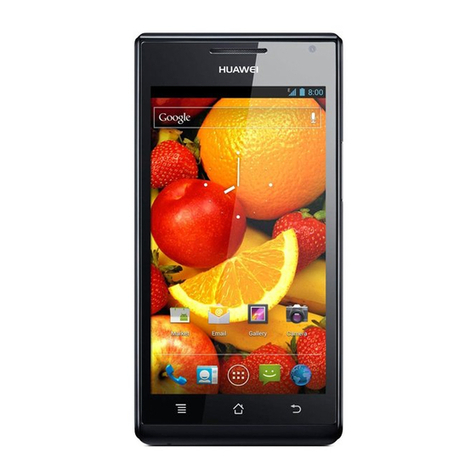
Huawei
Huawei U9200E Installation guide

Huawei
Huawei EVR-N29 User manual

Huawei
Huawei P8 MAX User manual

Huawei
Huawei G7010 User manual

Huawei
Huawei MAR-LX1Am User manual

Huawei
Huawei Y635 User manual
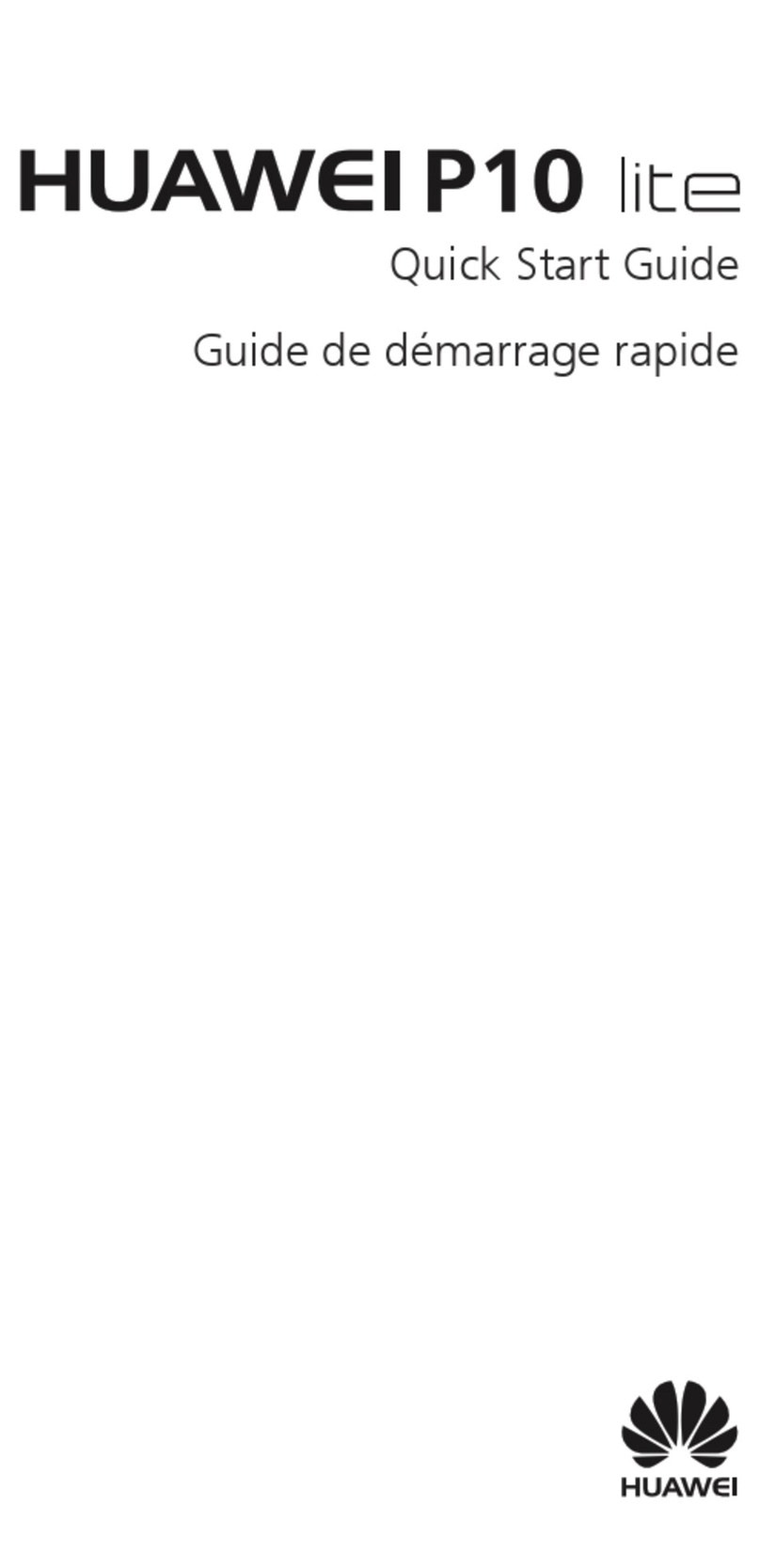
Huawei
Huawei P10 LITE User manual
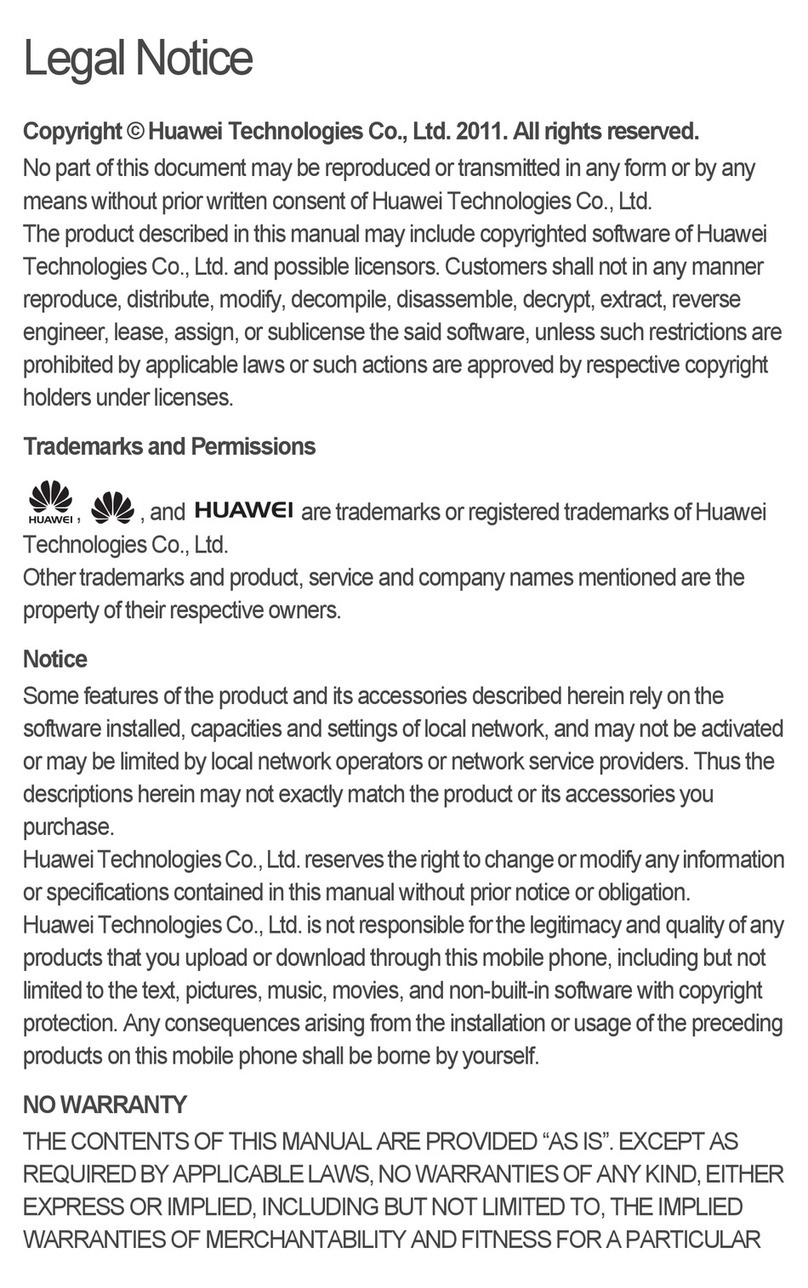
Huawei
Huawei Mobile Phones User manual

Huawei
Huawei P20 lite User manual
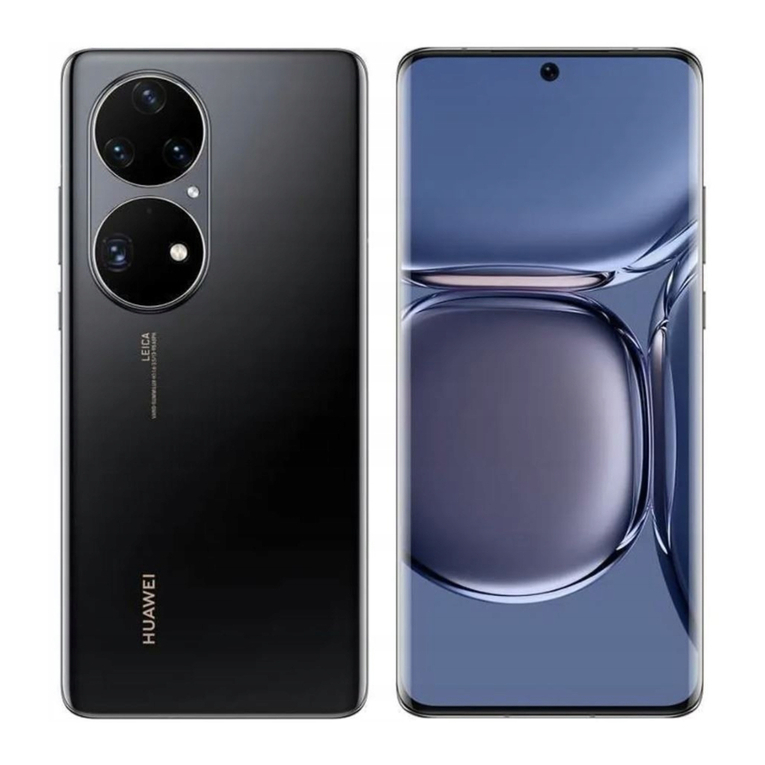
Huawei
Huawei P50 Pro User manual

Huawei
Huawei Y330-U07 User manual
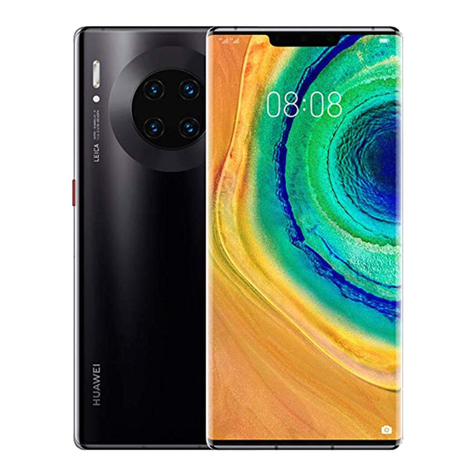
Huawei
Huawei LIO-L09 User manual

Huawei
Huawei Honor 7 Installation guide

Huawei
Huawei U5200 User manual

Huawei
Huawei G3620 User manual

Huawei
Huawei Y538 User manual

Huawei
Huawei G5000 User manual

Huawei
Huawei Y360-U03 Installation guide
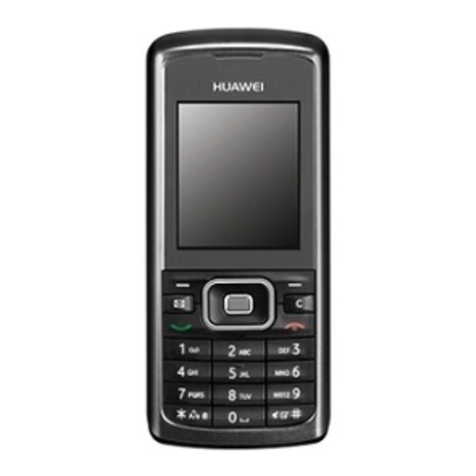
Huawei
Huawei U1107 User manual

